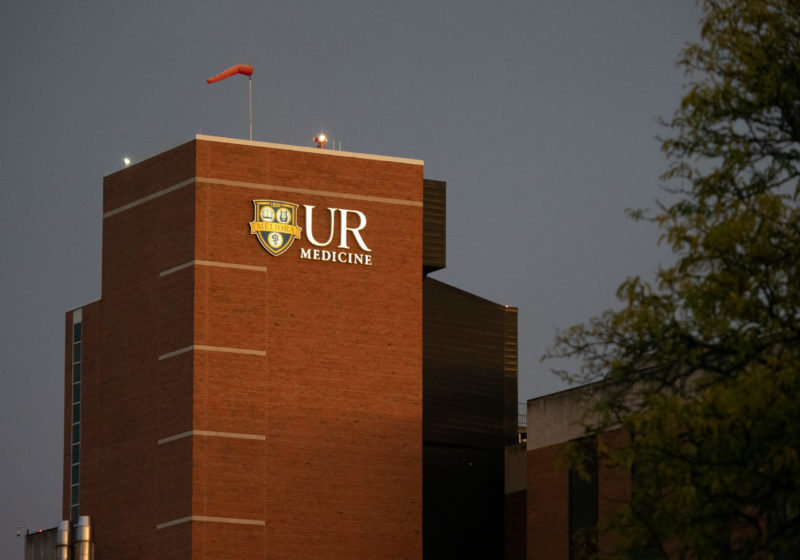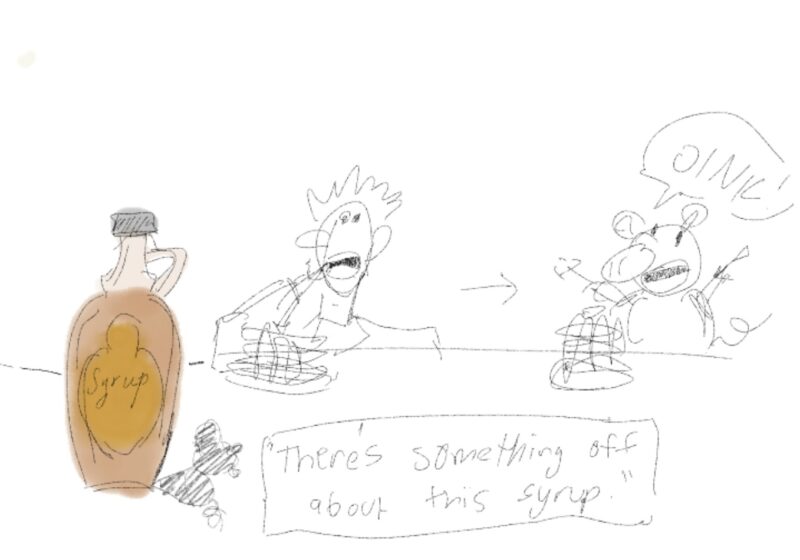Iron. It was probably there on your dinner plate countless times in your childhood in the form of spinach. And it was all over movie posters in 2008 for Robert Downey Jr.’s debut in the Marvel Cinematic Universe.
But in 2021, researchers at UR and Cornell University are talking about iron in a whole new way. Dr. Kimberly O’Brien and her colleague Dr. Zhenglong Gu are leading the FeGenes study to determine how hereditary hemochromatosis, or iron overload, varies by population group. Iron overload occurs when the body stores too much of the substance. The O’Brien Laboratory is specifically concerned with comparing iron absorption in Northern European individuals and East Asian individuals. The team hypothesizes that East Asians will be more efficient than Northern Europeans at absorbing iron and using it to make red blood cells. Participants in the study receive a personalized genetic ancestry report and $20.
Sara Bird oversees the FeGenes study at the UR location. A recent graduate from UR with a master’s degree in Public Health, Bird is the health project coordinator and human subject research coordinator for the FeGenes study here in Rochester. Bird recruits participants, meets with them, and does data entry and processing. Bird relies on old-school techniques to recruit participants, such as putting up flyers around the medical center and reaching out to businesses and communities directly. Alexa Barad has a similar role at the study’s Cornell University location. As a third-year Ph.D. student, Barad became involved in the FeGenes study as a part of her dissertation. Barad handles regulatory paperwork, processes samples, and takes on a variety of other tasks.
So how exactly does iron get absorbed into the body? Barad went into detail about the two types found in a person’s diet: Nonheme iron, and Heme iron. The former is found in plant-based foods, the latter in red meat. “We don’t know much about the absorption of heme iron,” Barad said. “ We just know it’s not that regulated based on the stores of the individual. But nonheme iron absorption is very much regulated based on the stores of the individual. So however much you need, you’ll absorb.”
After five years of waiting for funding from the National Institute of Health, O’Brien and the team began delving into the world of iron absorption. O’Brien offered a fascinating explanation about the background of the FeGenes study: “There’s a disease called hereditary hemochromatosis that’s an iron overload disease. It’s most common in Northern Europeans, especially in the Irish. Asians don’t get that. It’s very very rare in Asians.” However, she said, despite their decreased risk for hereditary hemochromatosis, scientists found that Asian people have the highest risk of iron overload of any population group. “They found a genetic mutation common in Asians and very rare in Northern Europeans. Iron is the only mineral that once we get it in the body, we can’t get rid of it. […] You regulate it at absorption, so we thought, why don’t we recruit East Asian individuals […] so that we can look at absorption.”
The FeGenes team has a list of objectives for the process. They hope to identify the different genes associated with iron absorption. They aim to demonstrate that if a person absorbs iron better, their iron stores are better. Newly applicable proteins may also be found along the way. Both men and women participate in the study. O’Brien specified that “men have a much higher risk of iron overload because they don’t have menstrual cycles.”
Another interesting element of the FeGenes study is the possible connection between chronic diseases and iron overload. The risk of getting diabetes and heart disease increases with iron overload, and East Asians are getting more diabetes at a lower body mass index. So there is a possibility that iron causes oxidative damage in the locations where the body stores it, which are the liver, the pancreas, and the heart.
O’Brien highly regards Dr. Eva Pressman, who is involved in the Department of Obstetrics and Gynecology at UR Medicine. According to O’Brien, Pressman’s assistance was essential in continuing clinical research through COVID-19. Both O’Brien and Pressman share a passion for the health and wellbeing of pregnant women, and this was highlighted in O’Brien’s concluding words: “Right now in the United States we have universal iron supplementation, which is good for preventing anemia. But that’s a policy that if there’s a section of the population that might be at greater risk for accumulating too much iron, maybe you don’t want to give as much to Asian women unless you know they’re anemic. And I think that gets people’s attention that if you don’t do this, you’re at a greater risk for something.”
Now two and a half years into the study, the team hopes to wrap up recruitment by the end of the year. Check out @obrienlaboratory on Instagram for updates about the FeGenes study and more information about recruitment.





